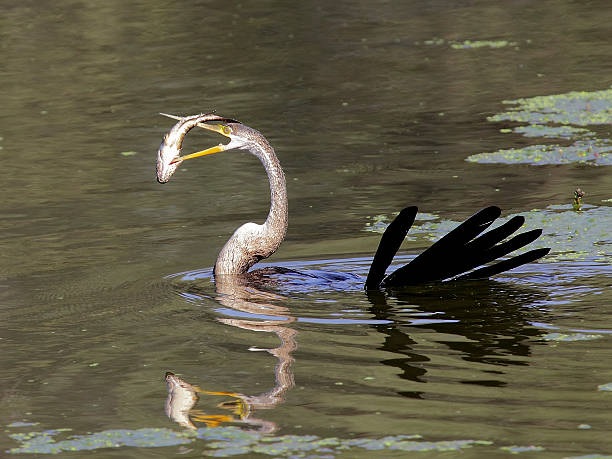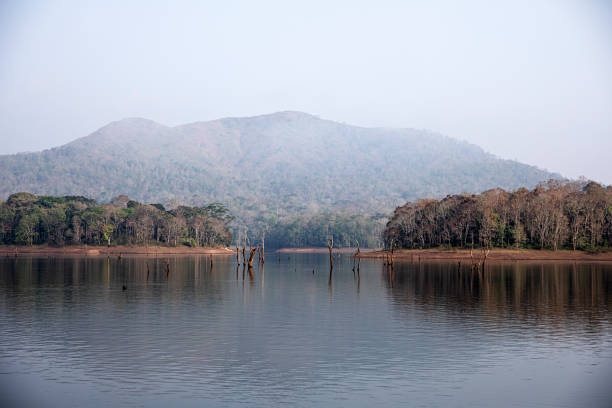Wildlife Tour is of great importance to India. The commitment to the conservation of the world’s most exotic animals and the protection of habitats play a major role in India’s national consciousness. India’s tigers are spread across 24 protected areas (60 percent of the world’s wild tigers are at home here). The country is rightly proud of “Project Tiger” because it provides living proof that humans can reclaim the habitat of these wonderful creatures.


The great differences in India’s landscape have produced an impressive biodiversity: more than 1,200 species of birds and 350 species of mammals, as well as thousands of fish, amphibians and reptiles are native here, and 13,000 species of flowering plants have been recorded to date.
The most famous animal in India is the tiger. Few animals exert such a fascination on humans as it does, which is both feared and admired. This elegant and mysterious big cat can only be observed here.
The vast Himalayan mountain range is home to the legendary snow leopard, and is also home to musk deer, panthers, ibexes and numerous species of pheasants. Further east, elephants, rhinos and gibbons live. On the higher slopes you can find chinkara gazelles, muntjac deer and even bears, while in the lower regions it gets colorful, with red pandas and blue sheep. Deer, wild boar and elephants live in the vast, fertile Ganges plain, while the Asiatic lion lurks in the west, and wild asses and giant bustards – a type of crane bird – fight for their survival in the extreme living conditions of the desert.


The most famous animal in India, however, is the tiger. Few animals exert such a fascination on people as the tiger, which is both feared and admired. This elegant and mysterious big cat can only be observed here.
Although the safaris in India are in a different league to the African tours, most travelers are pleasantly surprised by the quality of the safari experiences that can be had in India.
But the future prospects of the royal cat are anything but rosy. In Chinese medicine, the tiger’s body parts are attributed magical healing powers, and are used accordingly. The brain is said to be good for acne, and the kidney fat is highly valued as a remedy for male impotence. Many well-organized poaching groups even get away with their loot in well-known national parks such as Kanha or Corbett. Poorly equipped and underpaid gamekeepers can hardly put up any resistance to this lucrative business.
The national parks of central India are the classic and most rewarding destinations for a tiger safari in India and should definitely be the first port of call for first-time visitors.
Madhaya Pradesh was once famous for being a paradise for hunters and was eventually immortalized by Rudyard Kipling, whose epic “The Jungle Book” was set in this area. Here the tigers are still allowed to roam peacefully through the well-preserved nature reserves and this is where you have the best chance of getting the striped big cat in front of your lens.


The excellent Kanha National Park is our first destination for tiger fans. The park is wonderfully large, has four set routes and it is relatively easy to avoid the many cars.
The wonderfully little-visited Panna National Park near the fantastic Hindu temples of Khajuraho has seen an increase in tiger sightings since the reintroduction of tigers.
You should be careful in the extremely popular Bandhavgarh, which is bursting at the seams with tourists in high season.
Madhya Pradesh is also home to one of our favorite Indian national parks: Satpura. Although there are no tigers here, you can hike through the beautiful, species-rich forest and have a very good chance of seeing a Baloo bear (slotted bear) in person. This is a fantastic addition, for example, after you have satisfied your longing for tigers.
The parks in central India can be easily combined, and some worthwhile destinations in the west can be easily added on.


The western Indian states of Rajasthan, Gujarat and Maharashtra offer some of the most famous destinations for tiger safaris in India.
The undisputed mecca for tiger fans from all over the world is Tadoba National Park in the state of Maharashtra. The national park can be easily combined with Pench and Kahna National Parks: this is the route we recommend most often for tiger safaris in India.
For a long time, Ranthambore was the destination of every nature enthusiast on the Indian subcontinent. After Bandhavgarh in Madhya Pradesh was dropped due to the ecological disaster taking place there, Ranthambore has become more important. We always include Ranthambore in longer safaris lasting two weeks.
The excellent, small Keoladeo Park, also located in Rajasthan, should be at the top of the list for bird lovers. However, it should be noted that the best time to visit Keoladeo is in the winter months, which is not necessarily the best time to visit for tiger watching.
The Bera region in the wild west of Rajasthan promises a very special feature with the best chances of seeing leopards in all of India.


The other areas of this immense country tempt with a few isolated gems that are well suited as a supplement to a predominantly cultural trip, for repeat offenders or for a short trip in the northeast, north and south.
The most important destination for nature lovers in northern India is the famous Corbett National Park, one of the few parks in India where you can stay in huts within the park boundaries. The chance of seeing tigers in Corbett is relatively small, but you are much more likely to come across wild elephants.
Hardened expedition enthusiasts with a sense of adventure and very good physical condition should try a snow leopard trek in the remote Hemis National Park in Ladakh: although from a certain distance, you can observe snow leopards in the wild here with a fairly high degree of certainty.
The northeastern corner of India, with eight small states bordering Bhutan, China, Myanmar and Bangladesh, is no longer part of the Indian subcontinent. The most important and largest national parks are Kaziranga and Manas National Park in the state of Assam, whose greatest attraction is the small population of Asian Indian rhinoceroses that can still be found here.


The north of India, with its extreme terrain – from the peaks of the Himalayas to tropical lowlands – is perhaps better known for its wildlife. But the lush jungles and countless coastlines of southern India also contain an enormous biodiversity.
A well-organized safari through the Indian national parks should link the national parks of Bandipur and Nargahole with Periyar and the Kerala backwaters. There is little chance of spotting tigers here, but you can benefit from a wide variety of activities. The probability of encountering wild elephants is very high.
Wildlife Tour is of great importance to India. The commitment to the conservation of the world’s most exotic animals and the protection of habitats play a major role in India’s national consciousness. India’s tigers are spread across 24 protected areas (60 percent of the world’s wild tigers are at home here). The country is rightly proud of “Project Tiger” because it provides living proof that humans can reclaim the habitat of these wonderful creatures.


The great differences in India’s landscape have produced an impressive biodiversity: more than 1,200 species of birds and 350 species of mammals, as well as thousands of fish, amphibians and reptiles are native here, and 13,000 species of flowering plants have been recorded to date.
The most famous animal in India is the tiger. Few animals exert such a fascination on humans as it does, which is both feared and admired. This elegant and mysterious big cat can only be observed here.
The vast Himalayan mountain range is home to the legendary snow leopard, and is also home to musk deer, panthers, ibexes and numerous species of pheasants. Further east, elephants, rhinos and gibbons live. On the higher slopes you can find chinkara gazelles, muntjac deer and even bears, while in the lower regions it gets colorful, with red pandas and blue sheep. Deer, wild boar and elephants live in the vast, fertile Ganges plain, while the Asiatic lion lurks in the west, and wild asses and giant bustards – a type of crane bird – fight for their survival in the extreme living conditions of the desert.


The most famous animal in India, however, is the tiger. Few animals exert such a fascination on people as the tiger, which is both feared and admired. This elegant and mysterious big cat can only be observed here.
Although the safaris in India are in a different league to the African tours, most travelers are pleasantly surprised by the quality of the safari experiences that can be had in India.
But the future prospects of the royal cat are anything but rosy. In Chinese medicine, the tiger’s body parts are attributed magical healing powers, and are used accordingly. The brain is said to be good for acne, and the kidney fat is highly valued as a remedy for male impotence. Many well-organized poaching groups even get away with their loot in well-known national parks such as Kanha or Corbett. Poorly equipped and underpaid gamekeepers can hardly put up any resistance to this lucrative business.
The national parks of central India are the classic and most rewarding destinations for a tiger safari in India and should definitely be the first port of call for first-time visitors.
Madhaya Pradesh was once famous for being a paradise for hunters and was eventually immortalized by Rudyard Kipling, whose epic “The Jungle Book” was set in this area. Here the tigers are still allowed to roam peacefully through the well-preserved nature reserves and this is where you have the best chance of getting the striped big cat in front of your lens.


The excellent Kanha National Park is our first destination for tiger fans. The park is wonderfully large, has four set routes and it is relatively easy to avoid the many cars.
The wonderfully little-visited Panna National Park near the fantastic Hindu temples of Khajuraho has seen an increase in tiger sightings since the reintroduction of tigers.
You should be careful in the extremely popular Bandhavgarh, which is bursting at the seams with tourists in high season.
Madhya Pradesh is also home to one of our favorite Indian national parks: Satpura. Although there are no tigers here, you can hike through the beautiful, species-rich forest and have a very good chance of seeing a Baloo bear (slotted bear) in person. This is a fantastic addition, for example, after you have satisfied your longing for tigers.
The parks in central India can be easily combined, and some worthwhile destinations in the west can be easily added on.


The western Indian states of Rajasthan, Gujarat and Maharashtra offer some of the most famous destinations for tiger safaris in India.
The undisputed mecca for tiger fans from all over the world is Tadoba National Park in the state of Maharashtra. The national park can be easily combined with Pench and Kahna National Parks: this is the route we recommend most often for tiger safaris in India.
For a long time, Ranthambore was the destination of every nature enthusiast on the Indian subcontinent. After Bandhavgarh in Madhya Pradesh was dropped due to the ecological disaster taking place there, Ranthambore has become more important. We always include Ranthambore in longer safaris lasting two weeks.
The excellent, small Keoladeo Park, also located in Rajasthan, should be at the top of the list for bird lovers. However, it should be noted that the best time to visit Keoladeo is in the winter months, which is not necessarily the best time to visit for tiger watching.
The Bera region in the wild west of Rajasthan promises a very special feature with the best chances of seeing leopards in all of India.


The other areas of this immense country tempt with a few isolated gems that are well suited as a supplement to a predominantly cultural trip, for repeat offenders or for a short trip in the northeast, north and south.
The most important destination for nature lovers in northern India is the famous Corbett National Park, one of the few parks in India where you can stay in huts within the park boundaries. The chance of seeing tigers in Corbett is relatively small, but you are much more likely to come across wild elephants.
Hardened expedition enthusiasts with a sense of adventure and very good physical condition should try a snow leopard trek in the remote Hemis National Park in Ladakh: although from a certain distance, you can observe snow leopards in the wild here with a fairly high degree of certainty.
The northeastern corner of India, with eight small states bordering Bhutan, China, Myanmar and Bangladesh, is no longer part of the Indian subcontinent. The most important and largest national parks are Kaziranga and Manas National Park in the state of Assam, whose greatest attraction is the small population of Asian Indian rhinoceroses that can still be found here.


The north of India, with its extreme terrain – from the peaks of the Himalayas to tropical lowlands – is perhaps better known for its wildlife. But the lush jungles and countless coastlines of southern India also contain an enormous biodiversity.
A well-organized safari through the Indian national parks should link the national parks of Bandipur and Nargahole with Periyar and the Kerala backwaters. There is little chance of spotting tigers here, but you can benefit from a wide variety of activities. The probability of encountering wild elephants is very high.
Copyright © 2025 Delighted Journey | All Rights Reserved.